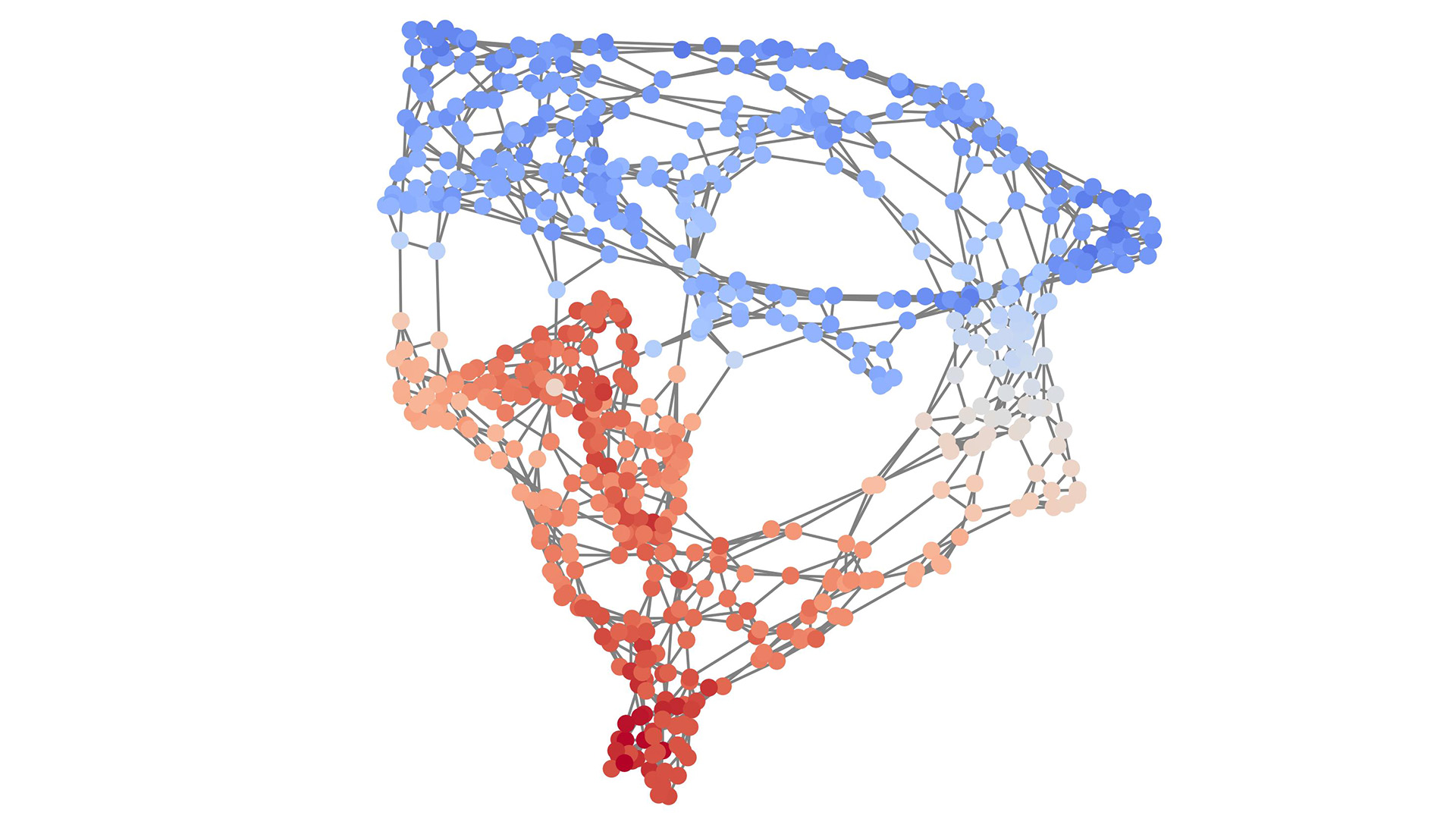
N2O-SSA
Combining measurements, modeling and machine learning to improve N2O accounting for sustainable agricultural development in sub-Saharan Africa

Abstract
Fertilizer use in sub-Saharan Africa is currently low, which results in lower agricultural crop yields than in many developed nations. In the coming decades, fertilizer use is predicted to increase, in order to drive increasing agricultural productivity. If fertilizer application is carefully controlled, emissions of greenhouse gases from agricultural soils can be minimized while ensuring high productivity and food security: Climate-smart agriculture. The success of climate-smart agricultural practices depends on detailed knowledge of nutrient cycles in soils.
Nitrous oxide (N2O) is a potent greenhouse gas that makes a significant contribution to global warming. In addition, it is the most important substance currently released that contributes to the destruction of the ozone layer. N2O is produced by microbes in soils as they use nitrogen in two essential biochemical reactions: Nitrification and denitrification. Agricultural fertilization increases the amount of nitrogen available in soils, which leads to more significant emissions of N2O. N2O emissions have primarily been studied in temperate ecosystems, but the causes and magnitude of emissions in sub-Saharan Africa are not well known. Expected changes in N2O emissions due to climate change and increasing fertilizer use are very poorly constrained, making it particularly difficult to drive investment in climate-smart agriculture in this region.
In this project, we will use a novel measurement technique – laser spectroscopy – to study N2O emissions from agricultural soils in Kenya. Laser spectroscopy allows us to directly monitor the isotopic composition of N2O emitted from soils, and thus infer the microbial N2O production and consumption pathways occurring in the soils. We will monitor N2O emissions and isotopic composition through a dry-wet seasonal transition to understand how climate and soil moisture control the production of N2O. We will relate our results to observations of N2O emissions made at other sites in sub-Saharan Africa, and use machine learning techniques to develop a new model of N2O emissions. This will allow us to understand and predict emissions and thus contribute to the development and uptake of sustainable agricultural practices.
People
Collaborators


Eliza has joined the academic team as a senior scientist. She previously worked as a postdoctoral researcher at the Massachusetts Institute of Technology (2012-2013), Empa (2013-2017) and the University of Innsbruck (2017-2020). Eliza received her PhD in Atmospheric Science from the Max Planck Institute for Chemistry in 2012, and her Bachelor degree with Honours in Antarctic Science from the University of Tasmania in 2008. Her previous research has centered around the use of novel isotopic measurements and modelling approaches in atmospheric and biogeosciences, in particular the nitrogen cycle. Her research at SDSC will focus on data analytics and machine learning approaches in environmental and natural sciences.


Fernando Perez-Cruz received a PhD. in Electrical Engineering from the Technical University of Madrid. He is Titular Professor in the Computer Science Department at ETH Zurich and Head of Machine Learning Research and AI at Spiden. He has been a member of the technical staff at Bell Labs and a Machine Learning Research Scientist at Amazon. Fernando has been a visiting professor at Princeton University under a Marie Curie Fellowship and an associate professor at University Carlos III in Madrid. He held positions at the Gatsby Unit (London), Max Planck Institute for Biological Cybernetics (Tuebingen), and BioWulf Technologies (New York). Fernando Perez-Cruz has served as Chief Data Scientist at the SDSC from 2018 to 2023, and Deputy Executive Director of the SDSC from 2022 to 2023
description
Problem:
Drivers of N2O emissions in tropical soils are poorly known, making it difficult to accurately predict emissions in a changing climate.
Impact:
We will advance our understanding of the major drivers of variability in tropical N2O fluxes and thus make improved predictions of N2O emission strength and variability in the coming decades.
Task:
In N2O-SSA, we will use a combined measurement-data science-modeling approach to understand the drivers of soil N2O emissions, in particular the influence of precipitation and soil moisture.
Specific project tasks include:
- Develop TREX-QCLAS-chamber system for a high precision monitoring of N2O fluxes and emitted N2O isotopic composition from soils.
- Conduct a 6-month measurement campaign in Eldoret, Kenya, to understand soil N2O sources and sinks across a dry-wet seasonal transition.
- Compile N2O flux and isotope data from studies in sub-Saharan Africa and other tropical regions, and – in combination with campaign measurements – analyze data to understand the drivers of N2O production and consumption.
- Use data science approaches for modeling and spatiotemporal upscaling, in order to predict future emissions and promote the development of targeted mitigation strategies.
Presentation
Gallery

Figure 1: Overview of the key ideas underlying N2O-SSA.
- Predicted growth in direct N2O emissions from increasing fertilizer application between 1995 and 2045 made using the IsoTONE model (Harris et al. 2022). The increased emissions are based only on increases in fertilizer use predicted in the Land Use Harmonization Database, therefore potential feedback due to climate change is not included in this estimate.
- Isotopic composition of N2O from different microbial sources. AOBs = Ammonia Oxidizing Bacteria. Isotopic signatures from Sutka et al. (2004, 2006), Toyoda et al. (2005, 2011), Wunderlin et al. (2013), Heil et al. (2014), Harris et al. (2015) and Denk et al. (2017).
- Simulated and measured spectra for dual-laser QCLAS monitoring of the 4 major isotopocules of N2O. Blue points indicate the laser measurements and the red line shows the fitted spectrum used to determine the mixing ratios of the isotopomers (see Harris et al. (2014, 2017) for further details).
Annexe
Additionnal resources
Bibliography
- Harris et al. (2022) Warming and redistribution of nitrogen inputs drive an increase in terrestrial nitrous oxide emission factor, Nature Communications, doi: 10.1038/s41467-022-32001-z
- Barthel et al. (2022) Low N2O and variable CH4 fluxes from tropical forest soils of the Congo Basin, Nature Communications, doi: 10.1038/s41467-022-27978-6
- Harris et al. (2021) Denitrifying pathways dominate nitrous oxide emissions from managed grassland during drought and rewetting, Science Advances, doi: 10.1126/sciadv.abb7118
Publications
Related Pages
More projects
CLIMIS4AVAL
News
Latest news


Smartair | An active learning algorithm for real-time acquisition and regression of flow field data
Smartair | An active learning algorithm for real-time acquisition and regression of flow field data


The Promise of AI in Pharmaceutical Manufacturing
The Promise of AI in Pharmaceutical Manufacturing


Efficient and scalable graph generation through iterative local expansion
Efficient and scalable graph generation through iterative local expansion
Contact us
Let’s talk Data Science
Do you need our services or expertise?
Contact us for your next Data Science project!



